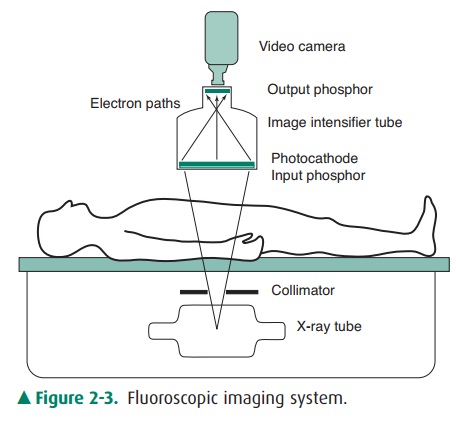Chapter: Basic Radiology : The Physical Basis of Diagnostic Imaging
Recording of Fluoroscopic Images

Recording of
Fluoroscopic Images
Fluoroscopic images can be
recorded for later viewing by sev-eral methods. The TV image can be recorded
using a video-tape recorder or a videodisc recorder, the latter having the
advantage of being able to view one frame at a time as well as providing random
access rather than the sequential viewing required by videotape.
In addition, some systems have
the capability of digitizing the electric signal from a TV frame and storing it
in computer memory chips. These systems often have a “last image hold”
capability that holds the last TV frame on the monitor. This method is also
used in digital subtraction angiography (DSA); that is, the analog signal from
the TV camera is digi-tized and stored frame by frame in a computer memory in a
512 512 or 1024 1024 image matrix. A short radi-ographic x-ray pulse is usually
used for making the image. Images made just before and after injection of
contrast mate-rial into the arteries can be subtracted digitally, so that only
the vascular system appears in the subtracted image.
Related Topics